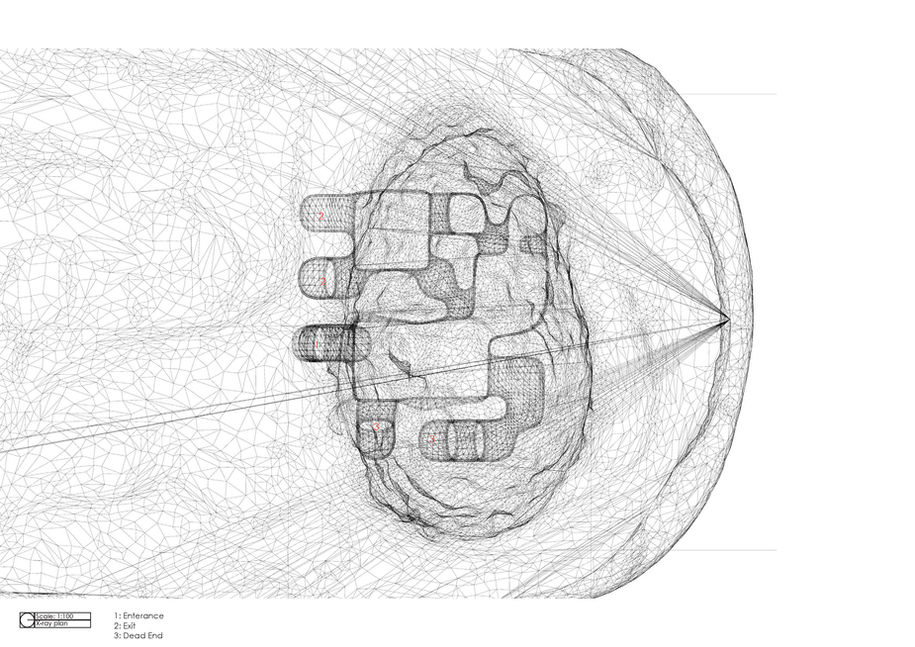BA Second Year
Second year at Canterbury School of Architecture. This year was a lot about exploration and trying out new methods of design. It was a move from all hand drawn, to a digital and hand drawn combination.
It was the beginning of an exploration of 3d modelling methods, computational design and digital representations of designs.

Archive Project
A digital archive for the storage of art and architecture, through 3D scanning. The archive explores how storing digital copies of art can prevent the loss of history, while at the same time question the rights of a 3D scan / point cloud. Who owns a digital scan, and how can you exhibit a copy?
The building is formed around a linear progression of work. It starts with a storage and processing part. A public connection space in the middle, that allows the public to enter the archive. And at the end the building has a cage like structure, that 3D prints and displays the 3D scans, and then destroys them a short while after.

Landscape Project
Landscape project based in Medway, England. The project started with a 1x6km site, that was explored and modelled at 1:4000, to find spaces of interest. My project focused down on a natural reserve for protection of birds that was in the site. It looked into how the paths of the reserve could make subtle viewpoints that were camouflaged in the existing landscape.
The viewpoint in focus generated two different viewing experiences, one hidden in the trees, and one hidden underground.

Folly Project
The folly project was based around imaginary landscapes. The landscapes were made in a casting studio, and cast in plaster. Within the mixture a series of random objects were dropped, in order to make an unpredictable landscape.
The follies were to react to the landscapes, and a narrative was made around their existence in the space.
The project is in the northern arctic sea on top of three large icebergs. Eventually these icebergs will melt away, making the project naturally temporal.
Textures + surfaces, liminal edges + temporal boundaries, and voids are the themes the follies will explore.
The follies will also look into different ways of forming space going from modernist ideals to parametric ones, and finally a combined iteration.










